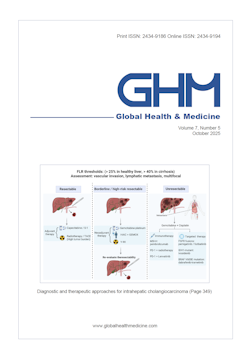Global Health & Medicine 2024;6(6):416-419.
Analysis of recent changes in treatment options for patients with hepatocellular carcinoma using data from a highly comprehensive Japanese national database: Impact of advances in systemic therapy and minimally invasive surgery
Kokudo T, Yamada Y, Sugiyama T, Goto R, Kokudo N
In 2011, the Ministry of Health, Labour and Welfare started providing data from the National Database of Health Insurance Claims and Specific Health Checkups of Japan (NDB) for research purposes. The NDB is an exhaustive and valuable database for health policymaking and research. It provides an accurate and most recent visualization of the burden of hepatocellular carcinoma (HCC) in Japan. In this study, we analyzed the trend in HCC treatments using data from the NDB. The NDB data were retrospectively analyzed to calculate the number of patients who were diagnosed with HCC (International Classification of Diseases, version 10 code of C22.0) and underwent treatment from fiscal year (FY) 2016 to 2020. We observed the following trends in HCC treatments during the past 5 years: a slight increase in the number of liver resection (LR) cases (+5.4%), a decrease in the number of radiofrequency ablation cases (−15.2%), and a considerable decrease in the number of transarterial chemoembolization/transarterial embolization cases (−38.2%). However, the number of patients who received systemic therapy dramatically increased from 471 in FY 2016 to 1,584 in FY 2020 (+236%). Among LR cases, there was a remarkable increase in the number of laparoscopic procedures from 1,227 in FY 2016 to 2,057 in FY 2020 (+67.6%). This analysis of a national highly comprehensive database revealed a very recent visualization of HCC management in Japan, wherein the impact of recent advances in systemic therapy and minimally invasive surgery was prominent.
DOI: 10.35772/ghm.2024.01061







